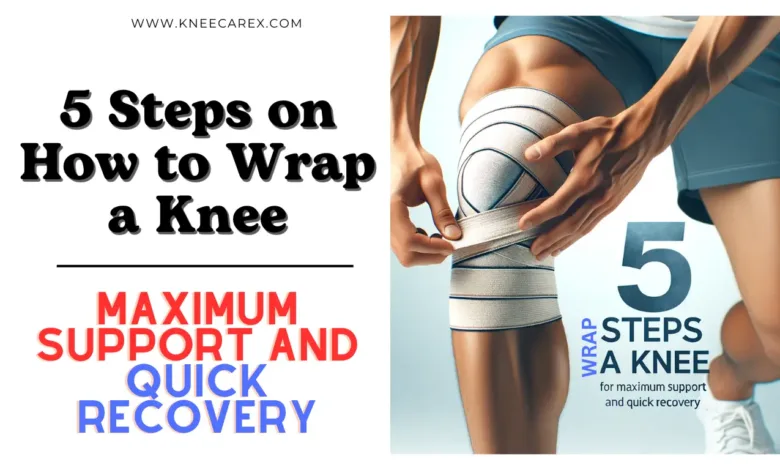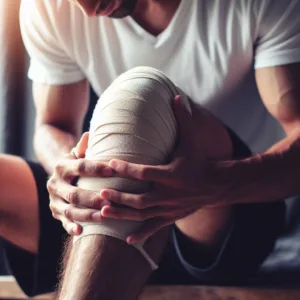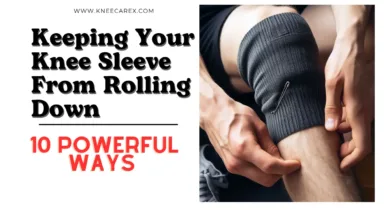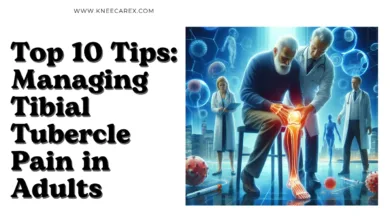5 Steps on How to Wrap a Knee for Maximum Support and Quick Recovery

Knee injuries can be quite crippling and have a big influence on daily activities and physical performance. When the knee is appropriately wrapped, it can offer crucial support and speed up the healing process for strains, sprains, and post-operative recovery. However, learning the proper technique for knee wrapping can be challenging, especially for individuals who are not experienced with the procedure.
In this step-by-step manual, we will go through the significance of knee wrapping, the advantages it provides, and give precise directions on how to wrap a knee for the best support and recuperation. With the aid of this thorough guide, readers will be better equipped to comprehend the anatomy of the knee, the various kinds of knee wraps that are available, and the proper methods for wrapping a knee securely and safely.
People can relieve pain, reduce swelling, and promote healing by adhering to these measures, enabling them to resume their regular occupations and physical activities with confidence. So let’s explore the realm of knee wrapping and discover how to offer the best possible care and speed up the healing process.
Contents
Prepare the knee for proper wrapping.

The right kind of knee bandage should be chosen after the knee has been prepared. Ace bandages are the most popular and practical solution since they offer both compression and support. Make sure the bandage is not too tight or loose and is the proper length and size for your knee.
Starting at the top of the knee, wrap the bandage across the leg in a diagonal fashion, partially overlapping the one before it. To avoid preventing blood flow, keep the bandage snug but not too tight. Wrap the bandage until it is just above the ankle, then fasten the end with clips or tape. These easy instructions will show you how to correctly wrap a knee with an ace bandage for the best support and healing.
Secure the ace bandage around the knee.
These easy instructions will show you how to correctly wrap a knee with an ace bandage for support and healing. Make sure the bandage covers the front and rear of the joint by starting at the top of the knee. After that, wrap the bandage around the leg diagonally, being sure to slightly overlap the previous wrap. This will produce a snug and secure fit that will give the knee the best support possible.
Keep the bandage snug but not so snug as to restrict circulation as you continue to wrap. To ensure even pressure and support, wrap a figure-eight pattern around the knee, crossing over the front and back. Use the included clips or tape to affix the bandage’s end as you get close to it. Ace bandages should be supportive and snug without being painful or constricting. Your knee will have the support and stability it needs for optimum recovery with the use of a high-quality ace bandage and proper wrapping technique.
Apply even pressure for optimal support.
It’s important to apply even pressure all the way through as you wrap a knee in an ace bandage for support and healing. By ensuring that the joint is appropriately supported and stabilized, this promotes the recovery process. While too little pressure can result in insufficient support, too much pressure can be uncomfortable and hinder movement. The bandage will deliver the required support while applying pressure evenly to minimize discomfort.
It’s crucial to remember that the amount of pressure applied to the knee should remain constant while using an ace bandage. This means that the bandage should be applied with constant tension and that each wrap should be snug but not excessively tight. The knee will be adequately supported, and the risk of injury will be reduced by doing this. As you wrap, keep in mind to check the pressure occasionally and make adjustments as necessary to ensure a balanced and supportive fit. You can guarantee your knee receives the most support and recuperation with this technique.
Wrap the knee with an ace bandage.

It’s crucial to begin securing the ace bandage above the knee and then gradually work your way down when securing a knee with one. Each wrap should have the bandage overlapping by about half its breadth while applying equal pressure. Put some tape or clips on the end of the bandage when you go to the bottom of the knee. Avoid wrapping the bandage too firmly to avoid uncomfortable blood flow restrictions. Ace wrapping a knee can be an efficient strategy to support and aid in the recovery of a knee injury with the right technique and attention to precision.
Ensure a snug fit without restricting movement.

It’s important to apply equal pressure all along while applying an ace bandage to a knee. This can be accomplished by overlaying the bandage and descending gradually from above the knee. However, it’s crucial to avoid putting too much pressure on the bandage, as this could impede blood flow and perhaps result in pain or injury. These methods will help you achieve a tight fit without losing freedom of movement.
Conclusions: How to Wrap a Knee
In conclusion, knowing how to properly wrap a knee can make a major difference in aiding healing and preventing further injury. By following the step-by-step recommendations provided in this article, you can guarantee that your knee is sufficiently supported and safeguarded during the recuperation process. Remember to choose the correct type of bandage or wrap, apply it tightly but not excessively tight, and constantly check for any signs of discomfort or circulation concerns. If you have any concerns or special circumstances, speak with a healthcare expert for personalized guidance. So go ahead, give your knee the treatment it needs, and get back on your feet feeling stronger than ever!
FAQ
What materials do you need to properly wrap a knee for optimal support and recovery?
You will require an elastic bandage, such as an ACE bandage, and potentially adhesive tape or Velcro straps to appropriately wrap a knee for maximum support and recuperation. Make sure the bandage is snug but not so tight that it hinders circulation. The knee can be wrapped in a figure-eight or spiral design to help with compression and stability. Adding a foam or gel cushion as a foundation layer can also improve comfort and security. It is always advised to speak with a healthcare professional for detailed instructions and advice on proper wrapping methods.
What are the necessary steps to prepare the knee before wrapping it?
Start by gently cleaning the area with mild soap and water to make sure it is free of dirt and debris before preparing the knee for wrapping. Thoroughly pat the knee dry. To protect the skin and offer cushioning, apply a thin layer of adhesive under wrap or padding. Put your knee in a relaxed, slightly bent position. Beginning below the knee, begin to wrap, overlapping each layer by roughly half the breadth of the wrap. Maintain a snug, but not too tight, fit as you wrap higher. Use tape or clips to affix the wrap’s end.
Should I wrap my knee if it hurts?
Yes, if your knee hurts, wrapping it can offer support and help with pain management. An elastic bandage wrapped over it or the use of a knee brace can offer stability, compression, and help restrict movement, enabling the knee to rest and heal. However, it’s crucial to speak with a doctor for a thorough assessment and advice on whether knee wrapping is suitable for your particular condition.
Should I wrap my knee overnight?
It depends on your motivation for wrapping your knee as well as the counsel of a medical expert. If you are healing from an accident or experiencing discomfort or swelling, wrapping your knee overnight can offer support and stability. To prevent blood flow restriction, it’s crucial to make sure the wrap is not too tight. It is better to speak with a medical professional who can examine your particular circumstances and offer tailored advice on whether or not to wrap your knee overnight.
Why do you wrap a sprained knee?
A sprained knee can benefit from support and stability from a wrap. By gently applying pressure and preventing excessive movement that would further harm the ligaments, it helps relieve swelling and inflammation. Additionally, the compression from the wrap may be soothing and pain-relieving. In general, using a wrap to treat a sprained knee helps to speed up healing and lessen pain as the patient recovers.
Also Check: How to Heal a Torn Meniscus Naturally: A Comprehensive Guide




